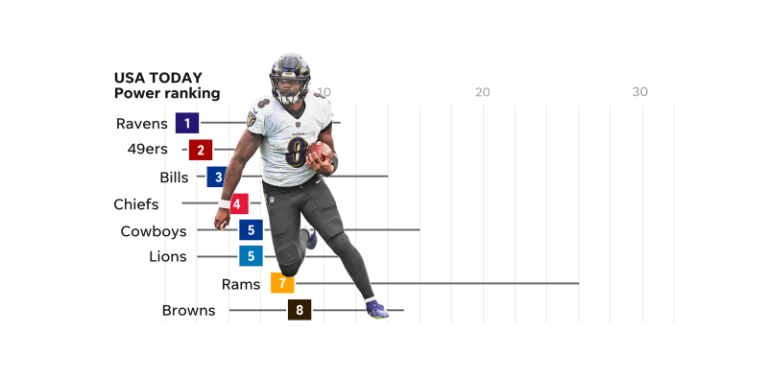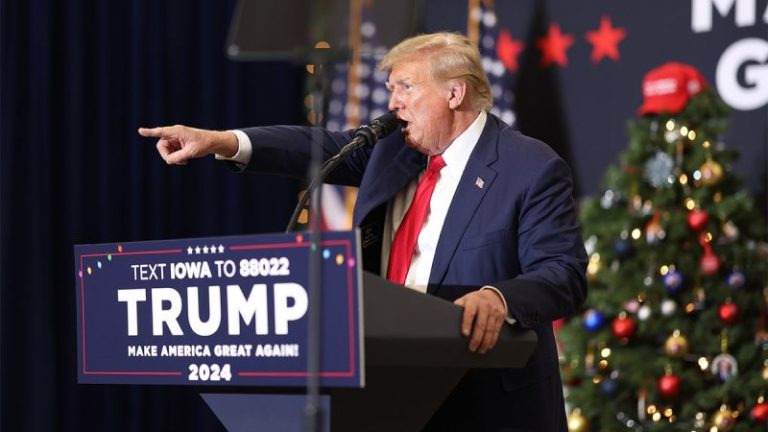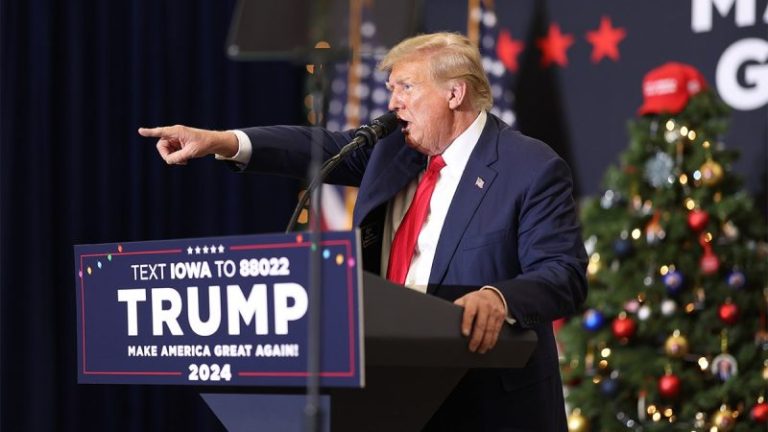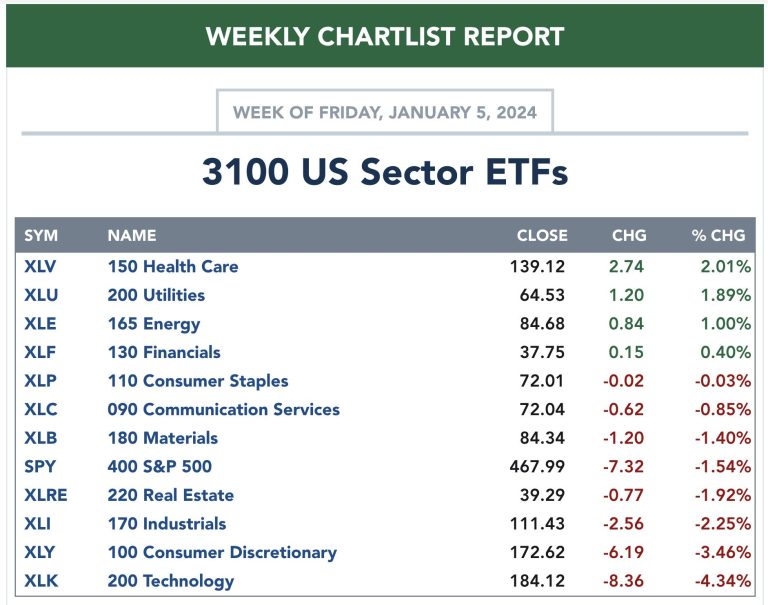Read this article for free!
Plus get unlimited access to thousands of articles, videos and more with your free account!
Please enter a valid email address.
By entering your email, you are agreeing to Fox News Terms of Service and Privacy Policy, which includes our Notice of Financial Incentive. To access the content, check your email and follow the instructions provided.
Former President Donald Trump is back in Iowa this weekend, picking up his pace on the campaign trail with just over a week to go until the state’s Jan. 15 caucuses kick off the Republican presidential nominating calendar.
His message to his supporters: ‘We don’t want to sit back and rely on the polls.’
The former president’s the frontrunner for the GOP nomination as he makes his third straight White House run.
Trump made history earlier this year as the first former or current president to be indicted for a crime, but his four indictments, including charges he tried to overturn his 2020 presidential election loss, have only fueled his support among Republican voters.
In the latest polls in Iowa, he stands at or above 50% support, miles ahead of Florida Gov. Ron DeSantis and former United Nations Ambassador and former South Carolina Gov. Nikki Haley, who are battling for a distant second place.
‘We’re leading by 30 to 40 points,’ Trump has told supporters.
But Trump, who skipped out on the first four GOP presidential primary debates and who until recently kept a light schedule on the campaign trail in Iowa and the early voting states, isn’t sitting back on his large lead.
‘The poll numbers are scary because we’re leading by so much,’ Trump told supporters at a rally in Waterloo, Iowa, just before Christmas.
‘We can put this to bed after Iowa. We’ve got to be sure that we put this thing away. … You gotta show up. Even if you think we’re going to win by a lot. You gotta show up.’
The Trump campaign shifted into higher gear a few weeks ago, training close to 2,000 caucus captains in precincts across the state.
‘Their sole job is to run each individual caucus that takes place and making sure that the list of the targeted voters supporting President Trump show up,’ Trump campaign senior adviser Chris LaCivita told Fox News last month.
The Trump campaign’s ground game operation in Iowa is leagues ahead of his 2016 effort, when he narrowly lost the caucuses to Sen. Ted Cruz of Texas.
‘Ted Cruz won in 2016 because his ground game was fantastic,’ Iowa GOP Chair Jeff Kaufmann, who remains neutral in the Republican nomination race, told Fox News.
And pointing to the 2024 Trump campaign, Kaufmann emphasized ‘their ground game has increased immensely.’
Trump and his campaign team are aiming for an overwhelming victory in Iowa as part of their plan to wrap up the nomination race as quickly as possible and pivot to a general election rematch with President Biden.
Their major concern is complacency.
Iowa Attorney General Brenna Bird, a top Trump surrogate, told Fox News that she is a ‘caucus captain myself in Guthrie County. I will be there at the caucus helping rally votes for President Trump on caucus night. We have to stay focused, and our people have to show up. The support is strong, it’s there, but we have to show up.’
Another concern for Trump and his campaign is making sure they match or beat expectations, which may be inflated due to his commanding lead in the polls in Iowa and in national surveys.
Trump, aware of the expectations he faces, took aim at a familiar target — the media.
‘If we win in a massive number, but if it’s a little bit less than that, they’ll say, ‘Oh, he didn’t beat expectations,” Trump told his supporters.
Longtime Republican strategist David Kochel told Fox News last month Trump is ‘driving his own expectations up. … It’s all expectations, and Trump’s are sky-high.’
‘If he’s under 50%, it’s a problem for him given his poll average now is well over 50,’ argued Kochel, a veteran of numerous GOP presidential campaigns nationally and in Iowa.
Seasoned Iowa-based Republican strategist Jimmy Centers said if Trump ‘wins by more than 20 points, and he’s over 50%, my goodness, this thing is over before it even begun.’
‘But if it’s under 15 points, then I think we have a race if the field consolidates,’ added Centers, a veteran of multiple presidential campaigns and gubernatorial and congressional campaigns. He served as communications director for former Iowa Gov. Terry Branstad and current Gov. Kim Reynolds.
Trump isn’t the only candidate battling expectations.
DeSantis, who’s staked his shot at the nomination on a strong showing in Iowa, has predicted a victory in the Hawkeye State.
‘We’re going to win here in Iowa,’ he told Fox News Digital on the campaign trail in the eastern part of the state the week before Christmas.
And he predicted the caucuses ‘will be very clarifying in terms of who is a real deal and who’s not. So, we look forward to that.’
Asked if he’ll move on to New Hampshire, which votes second in the GOP calendar, regardless of his finish in Iowa, DeSantis quickly said, ‘Of course. Yeah, absolutely. Of course.’
Centers told Fox News that ‘to march on to New Hampshire and make a strong case, Gov. DeSantis needs to finish in second place.’
Haley, who has enjoyed plenty of momentum in recent weeks, catching up to DeSantis in Iowa and in national polls and narrowing the gap with Trump in New Hampshire, has been careful to temper expectations.
Asked where she needs to finish in Iowa and New Hampshire, Haley reiterated in a Fox News Digital interview this week that ‘I need to be strong in Iowa, strong in New Hampshire, strong in South Carolina. That’s what I intend to do.’
But Republican Gov. Chris Sununu of New Hampshire, Haley’s top surrogate, the next day appeared to raise expectations.
‘We know Trump is going to win the caucus in Iowa,’ Sununu said at a Haley campaign event in Londonderry, New Hampshire. ‘But, again, Nikki coming in second place when nobody thought it could happen, that’s going to happen and give her even more momentum.’










